History[edit]
Marcos was founded in Dolgellau, North Wales, in 1959 by Jem Marsh and Frank Costin. Costin had earlier worked on the De Havilland Mosquito fighter-bombers and from there he got the idea to use plywood for the chassis. The company moved to a converted mill in Bradford on Avon, Wiltshire in 1963; in 1971 they reclocated to a £125,000 purpose-built factory at nearby Westbury.
Problems with exporting cars to the USA and the move to the expensive new premises led to financial troubles, and in 1971 Marcos went out of business. In July 1971 it was reported that the Rob Walker Group of Companies, a principal dealer, had acquired the stocks and assets and established a new company, Marcos Ltd.[1] The new owners said production would continue, albeit, at least in the short term, only for the UK market,[1] but it is not clear whether any additional cars were built. Although Marcos dealers in the UK had been heavily discounting new cars since the end of 1970, and Motor magazine reported at the time of the collapse that the company’s stock of 35 unsold cars in the United States had to be “liquidated”,[1] there may have been a substantial stock of new cars still looking for buyers.[citation needed]
One Saturday in June 1972, what was described as “a cash jumble sale of Marcos bits – prototype and shop soiled components, benches, tools…” took place at the “old Marcos Cars factory” at Westbury.[2] The sale was occasioned by the company’s reorganisation and move to a smaller factory.[2]
Marsh stayed in the car business, and bought back the rights to the Marcos name in 1976. In 1981 the brand was relaunched with the Marcos V6 Coupé, which was sold in kit form. The design evolved to incorporate both Rover and Ford V8 engines, as well as moving from kit cars to entirely factory built cars (from 1992), before the company went bankrupt again in 2000.
Canadian entrepreneur Tony Stelliga formed Marcos Engineering with Jem Marsh, and revived production in 2002. Race car production was relocated to the Netherlands while road car production moved to Kenilworth, Warwickshire, England. By 2005 most of the designers from near-to-bankrupt TVR had joined the company.
On 9 October 2007 it was again announced that Marcos would cease production and go into voluntary liquidation.
Cars
Marcos GT Xylon, Marcos Luton Gullwing; Marcos Fastback GT
The first car, the Xylon, which had gullwing doors and a windscreen in four panels, was nicknamed the “Ugly Duckling”. A total of nine, aimed at 750 Motor Club events, were built in 1959 and 1960. For production the body was made less radical but initially retained the gullwing doors. It was powered by a choice of Ford engines varying from 997 cc to 1498 cc and had Standard 10 and Triumph Herald steering and suspension components. 39 were made up to 1963.
In 1961 brothers Dennis Adams and Peter Adams started working with Marcos and introduced several changes to the original design. The Marcos Luton Gullwing and the Spyder were introduced in November 1961. This design was again reworked, becoming the Marcos Fastback GT, which was displayed at the London Racing Car Show in 1963. The chassis was fabricated from laminated 3 mm thin sheets of marine plywood, giving the cars a strong monocoque and low weight (the GT was internationally homologated with 475 kg), so they performed well in sportscar competition. Most early Marcos models competed in national and international events.
Marcos 1800GT
In 1964 the Marcos 1800 GT was introduced, using the four-cylinder Volvo 1800 cc unit with overdrive gearbox and De Dion rear axle. This was to be the design that would become familiar to sports car enthusiasts for more than 30 years, even though the original plywood chassis would later be replaced by a steel chassis. A variety of other engines, mostly from Ford, but also from Triumph and Volvo became available over the years. In 1966 the GT was changed to Ford engines of originally 1500 cc, later 1650 and 1600 cc, and a coil-sprung live rear axle. In 1968 the Ford Essex V6 engine from the Capri Mk1 was added. In 1969 the plywood chassis was replaced by steel, which shortened production time and saved on cost, and the Ford Essex V4 engine replaced the earlier inline-fours. In 1971 a few cars with the Triumph 2.5-litre straight-six were built, to use up engines from the slow selling Mantis. As the bonnet was a close fit over the engine, this variety of engines resulted in a corresponding variation in the bonnet design, particularly as regards changes designed to clear engine air intakes, often the only external sign of the type of engine fitted.
The Ford V6 version achieved over 120 mph (190 km/h) on test and the Volvo-engined model was not far behind it, but the heavy cast-iron engines increased nose-heaviness in comparison to the four-cylinder variants. From 1970 cars for the North American markets received Volvo’s inline-six cylinder, 3-liter engines coupled to Borg-Warner automatic transmissions. These have tubular steel space frames, a higher ride height and no headlight covers, in order to get US road certification. Delays and problems with the federalized cars, together with the development costs of the Mantis, led the company to close its doors for the first time.
Mini Marcos
The front-wheel drive Mini Marcos, designed by Malcolm Newell, was introduced in 1965. With a fibreglass monocoque body, Mini subframes and suspension, and a wheelbase of 80 inches (2,000 mm), it was powered by a transversely mounted Mini A-series engine driving the front wheels. A French-entered example came 15th and last in the 1966 Le Mans race, the only British car to finish.
When Marcos stopped making the car in about 1975, another company produced updated versions as the Midas. Cars were also made under licence in South Africa, Australia and Ireland.
Revived in 1991 for the Japanese market, production continued until 1995. A total of over 1300 Mini Marcos cars have been sold in kit form and as complete cars.
After the demise of Marcos Sales Limited, the Mini Marcos moulds were acquired by Marcos Heritage Spares, who relaunched the car in 2005 as the Marcos Heritage Mk. VI and Mk. VI GT.
Marcos Mantis
In 1968 came the first Mantis, the Mantis XP. A racing car designed for the Group 6 Prototype category, it was powered by a mid-mounted Repco V8 engine.[5] Like earlier Marcos cars it used a plywood monocoque chassis, albeit different from that of the GT. Only one car was made, and its only race was the 1968 1000 km event at Spa, where it retired with electrical problems in heavy rain. Originally Marcos intended to race it in the 1968 Le Mans, but that was postponed from June to September, and by then the car was in America, fitted with a Buick V8 engine (from which the Rover V8 engine was derived).
A full restoration of the XP was completed in 2008. Now based in America, it has visited the UK for the Marcos 50th anniversary celebrations and the Goodwood Festival of speed.
The next Mantis, the four-seater M70, was launched in 1970 and had a fuel-injected 2.5-litre Triumph TR6 six-cylinder injected engine mated to a four-speed gearbox. The promotional brochure says the styling “gives high all round visibility”, and “a low centre of gravity together with an extremely wide track ensures superb roadholding. The luxurious interior seats four in comfort, and the boot, with a capacity of 10 cubic feet, makes the Mantis ideal for the man who is going places and wants to travel in style.”
32 were sold before the company went into liquidation in 1972. Autotune acquired the moulds and produced a few more cars in the mid-1980s as the “Autotune Mirage”.
Marcos returns
Jem Marsh resurrected the Marcos brand in 1981, offering the previous GT cars as kits. Engine options included Ford’s 3.0 Essex V6, 2.8 Cologne V6, 1600 Crossflow, 2.0 Pinto and 2.0 V4, plus Triumph’s 2.0 and 2.5 straight six. About 130 kits were sold up to 1989.
Marcos Mantula, Spyder and Martina
n 1983 the Marcos Mantula was introduced, externally very similar to the old GT, but now powered by a 3.5-litre Rover V8 with a 5-speed gearbox. This alloy engine weighed less than the previous six-cylinder cast-iron units, reducing overall weight to about 900 kg and making the car competitive against other Rover-powered sports cars such as TVR and Morgan. The engine evolved into the Rover Vitesse EFi engine, and later Mantulas were fitted with the 3.9 EFi. In 1986 the model was made available as a convertible, the Marcos Spyder, which would outsell the coupés in later production. 1989 saw the introduction of independent rear suspension, together with the Ford Sierra‘s 7″ differential and rear disc brakes. The independent suspension allowed a full-width boot and the relocation of the battery and heater/air conditioning. 170 coupés and 119 Spyders were produced.
Launched in 1991, the Marcos Martina was externally very similar to the Mantula, but with flared front wheel arches. It used the Ford Cortina‘s 2-litre four-cylinder engine, steering and suspension, and approximately 80 were produced. Originally available as kits or factory-built, the cars were all factory-built from 1992. Production of the Mantula and Martina ceased in 1993.
Marcos Mantara, Mantara GTS and LM cars
In 1992 Marcos left the kit car business, all cars from this point onwards being factory built, and launched the Marcos Mantara which was sold through dealers in limited numbers. The main difference between the Mantara and the Mantula was the adoption of MacPherson strut front suspension in place of the Triumph suspension and associated trunnions. This change resulted in a wider front track, different bonnet, and flared front arches. The rear wheel arches and rear lights were also changed to give the car a more modern appearance. Power steering was also available for the first time. The Mantara was powered as standard by a 3.9 litre fuel injected Rover V8 or a 4.6 litre Rover V8 as an optional alternative.
The Marcos GTS was a version of the Mantara powered by the 2-litre Rover Tomcat engine. The top version was the 200 bhp (149 kW; 203 PS) turbo version. The GTS version of the Mantara had a slightly different bonnet incorporating much smoother lines, flared-in headlamps, and a deeper spoiler, which was used on the later Mantaray model. A handful of late Mantara V8’s were produced with the same bonnet as the 2.0 litre GTS.[6]
For a return to GT racing, a range of modified Mantaras was also produced in the LM (Le Mans) versions. In order to qualify as a production vehicle, a limited number of road going cars were also made. Several versions of the LM were made such as the LM400 (with a Rover 3.9-litre V8 engine), LM500 (Rover 5-litre V8) and LM600 (with 6-litre Chevrolet small-block V8). Only 30 road-going LM cars were ever built, and of these only one was a road-going LM600.
Marcos Mantis
In 1997 the Mantis name was re-used on a 2-seater coupé or convertible road car based on the LM series powered by the 4.6 litre all-aluminium quad-cam Ford ‘Modular’ engine producing 327 bhp (244 kW; 332 PS) and capable of 170 mph (270 km/h). To accommodate the engine the bonnet of the Mantis was significantly remodelled from the previous LM range (that used the Rover V8), and the upper chassis rails in the engine bay were widened. Price for the Mantis was £46883.
In 1998 it was decided to supercharge the engine to produce the first British production sports car with over 500 bhp (373 kW; 507 PS), this being named the Mantis GT. Using a Vortech supercharger, and intercooler the Mantis GT engine produced 506 bhp (377 kW; 513 PS), which could accelerate the car from 0-60 mph in 3.7 seconds. Price for the Mantis GT was £64331.
Production of the Mantis was 51 cars, with 16 being the supercharged GT version (this does not include the Mantis Challenge race cars).[7]
Marcos Mantaray
In 1997 the Mantara evolved into the Marcos Mantaray, with the re-styled bonnet from the Mantara GTS and with a new shape rear-end. Mechanically the car was identical to the Mantara. It was offered with 4.0 and 4.6 litre Rover V8 as well as the 2-litre, and 2-litre turbo Rover Tomcat engines. Only 11 were made with the 4.0-litre, and seven with the 4.6-litre engine. Total factory production was 26,[8] plus one car in chassis/body component form.
Marcos Marcasite
In 2002, after a break in production caused by bankruptcy, a new company (Marcos Engineering Ltd) was launched with Jem Marsh as Vice Chairman, and with the financial backing of Canadian Tony Stelliga, to manufacture the Marcasite TS250 with a 2.5-litre 175 bhp (130 kW; 177 PS) Ford V6 followed in 2003 by the 5-litre Rover V8-powered TS500. The 2002 price of the TS250 was £29,744 +VAT, with options such as air-conditioning (£1634), full leather interior (£1626) and Hydratrak differential (£360). Other unpriced options included an elm or walnut veneer dashboard, and a newly designed hard top.
Marcos TSO
Also in 2004, the 5.7-litre Chevrolet Corvette (LS1) V8 TSO GT was announced, but solely for the Australian market. It was joined in 2005 by the GT2 for the European market.
In 2006 Marcos announced the TSO GTC, a modified version of the current TSO with a racing suspension, racing brakes and a rear diffuser. The car continues on with its Chevrolet-sourced 420 bhp (310 kW) V8, but there was also a 462 bhp (345 kW) Performance Pack available as well. With the extra power from the Performance Pack the TSO GTC accelerated to 60 mph (97 km/h) in 4.1 seconds and to 100 mph (160 km/h) in 8.5 seconds. With the bigger 340 mm (13 in) AP Racing brakes, the TSO GTC delivered a 0-100-0 time of 12.9 seconds, and the extra power allowed it to accelerate from 50 to 70 mph (110 km/h) in just 2.1 seconds. Its top speed was over 185 mph (298 km/h).
Only about 7 cars were produced before the company went into liquidation in October 2007.
Marcos Spirit 220
The Marcos name re-appeared again, together with its original trademark, after owner Tony Brown bought the rights to the name in 2010, and formed Marcos Cars Ltd, based in Pembrokeshire, Wales. A prototype V6 mid-engined car bearing the Marcos badge called the Spirit 220 has made several appearances from 2013.
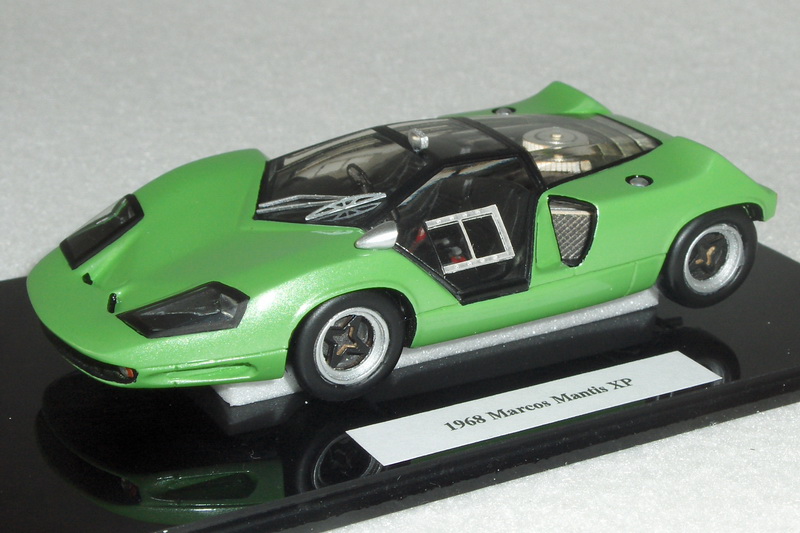
bang seng 1968 Marcos Mantis XP
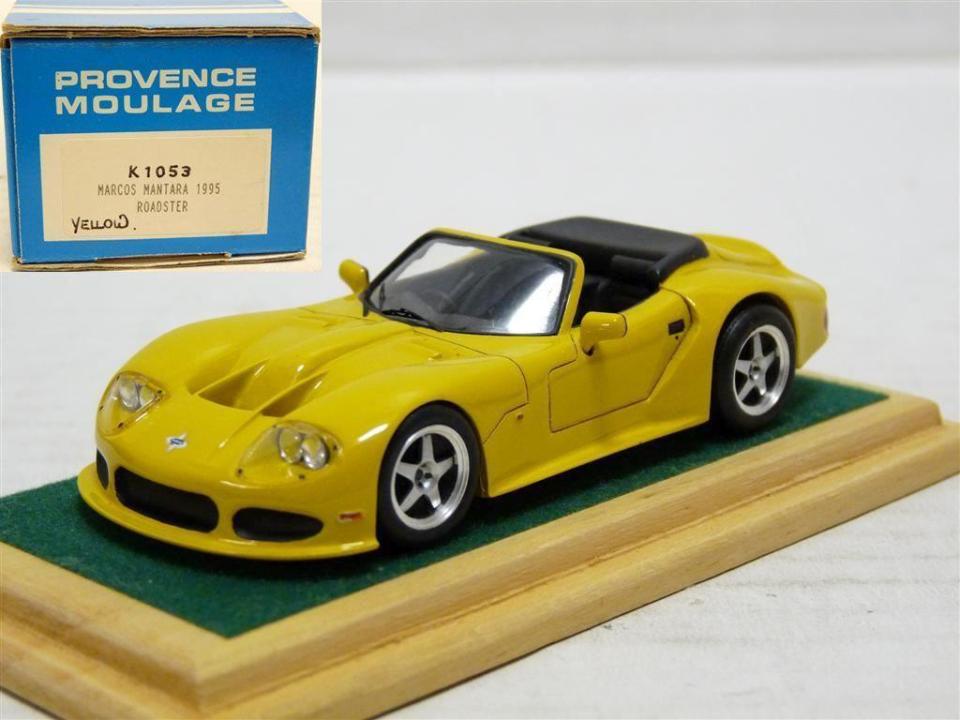
Provence Moulage 1995 Marcos Mantara
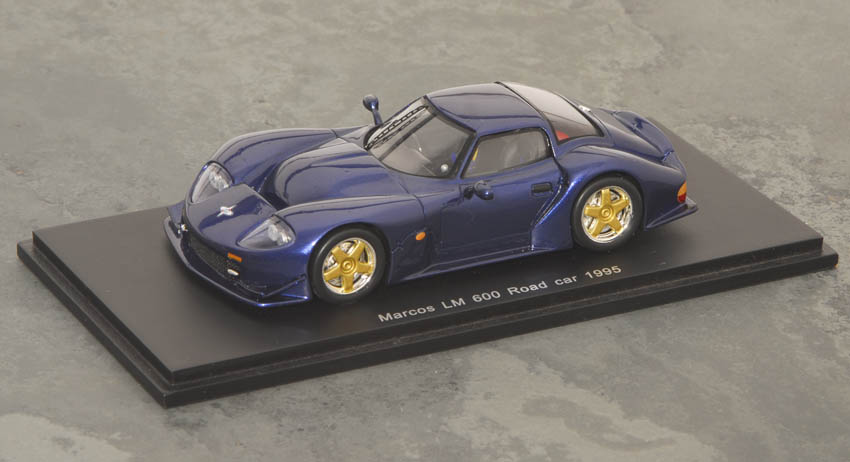
SPARK MODEL 1995 LM600
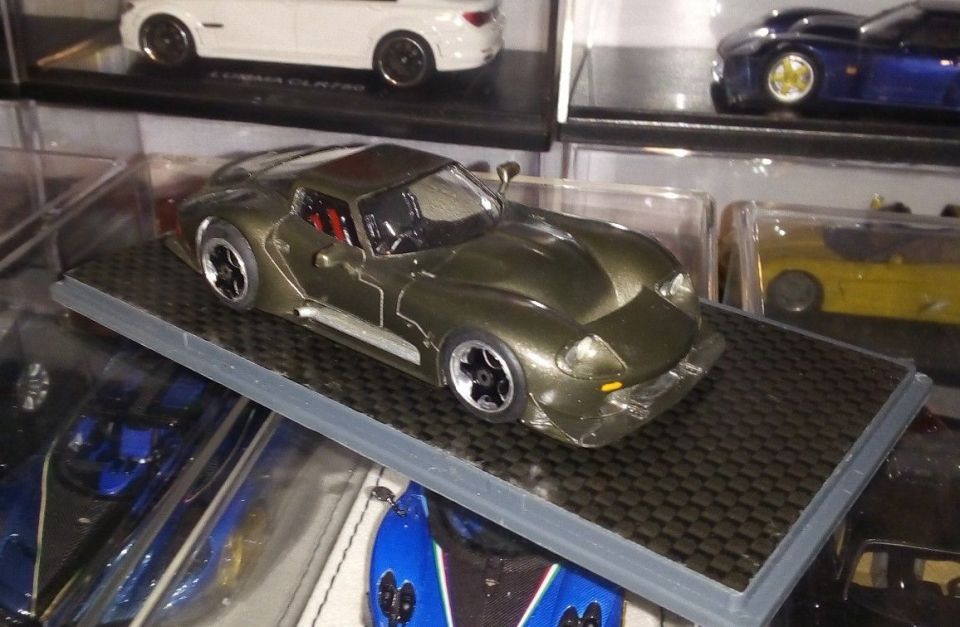
PROVENCE MOULAGE – MARCOS 600 LM
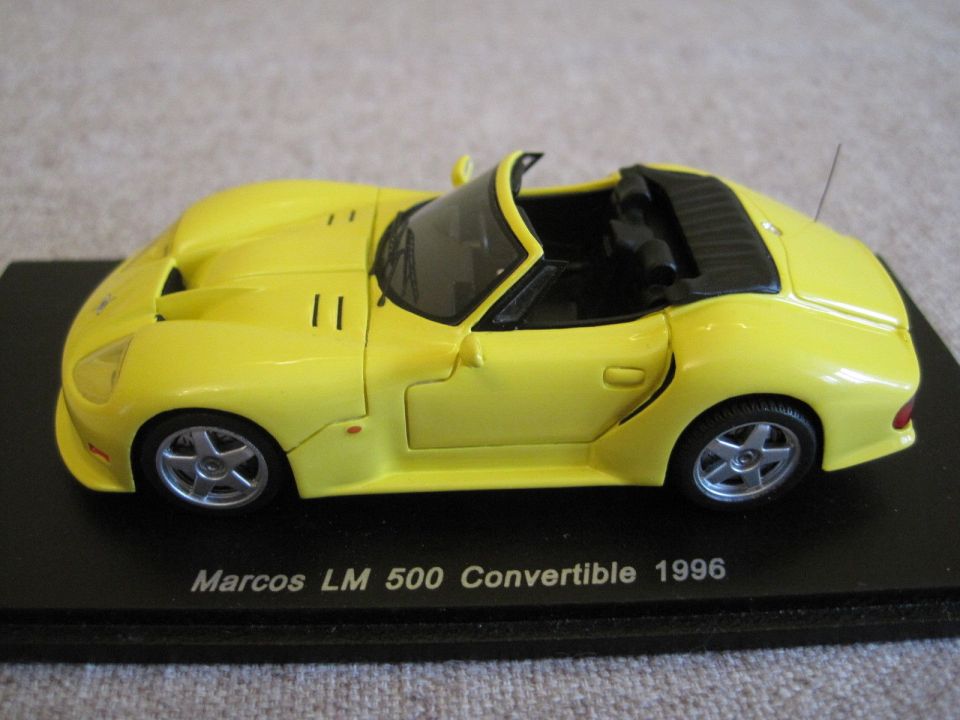
SPARK MODEL Marcos LM 500 Convertible 1996
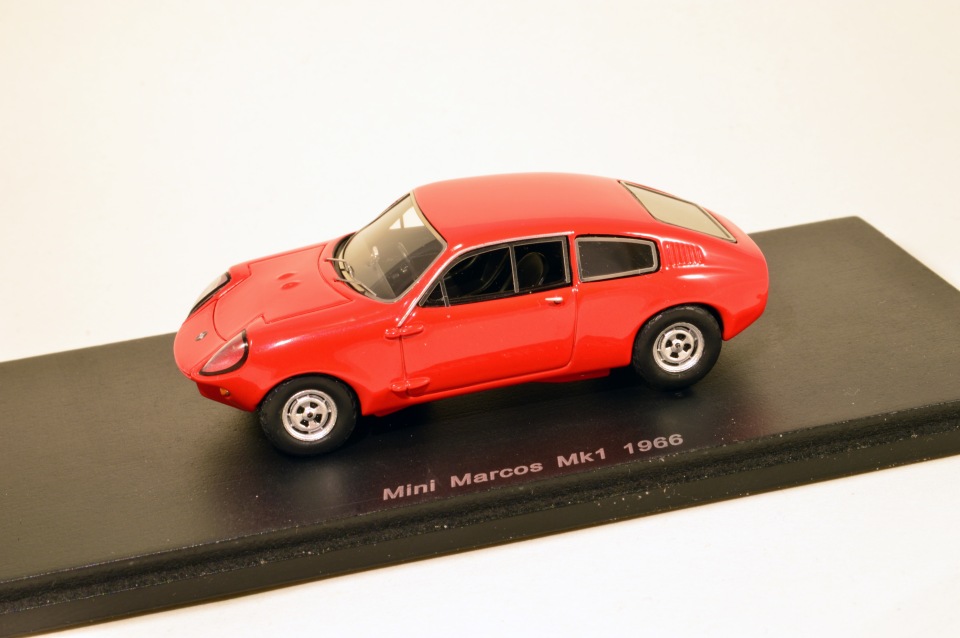
SPARK-MODEL – MINI – MARCOS MKI 1966
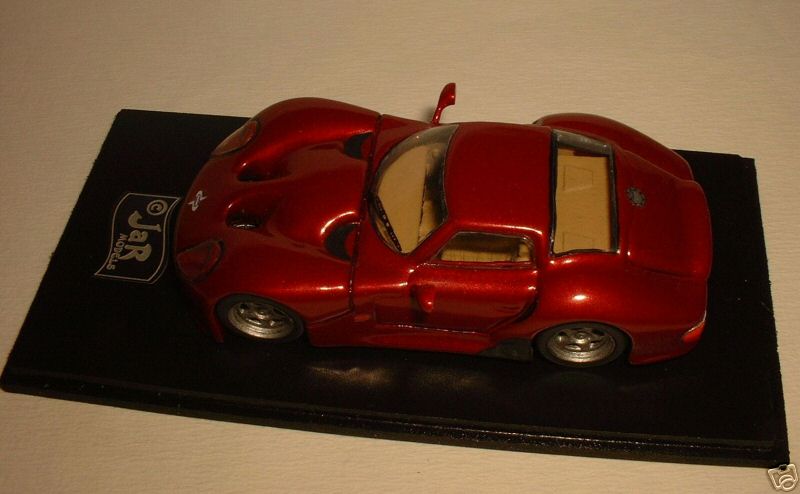
JaR Models Marcos Mantis
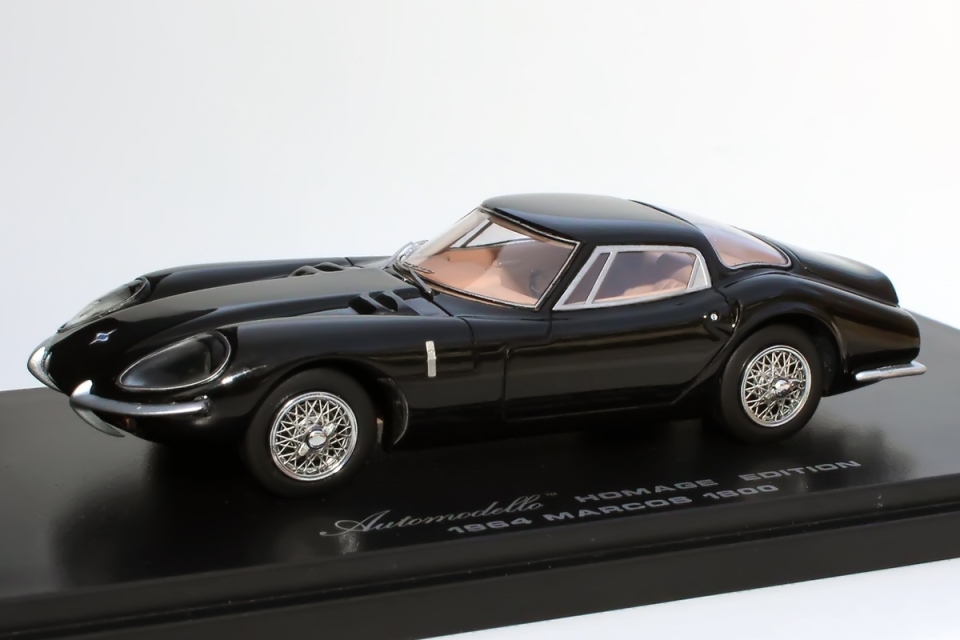
AUTOMODELLO 1964 MARCOS 1800 LHD
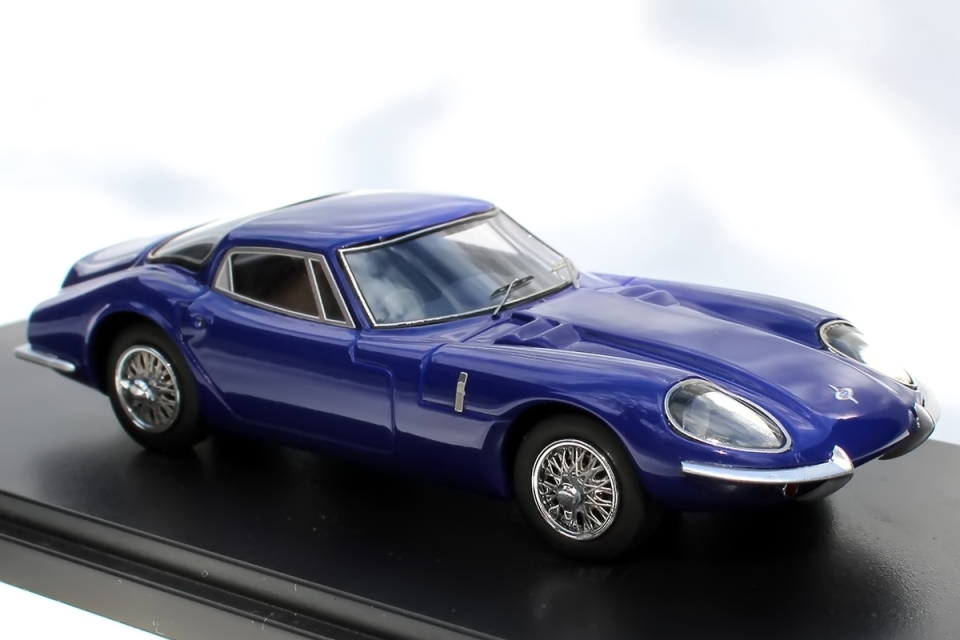
AUTOMODELLO 1964 Marcos 1800 RHD
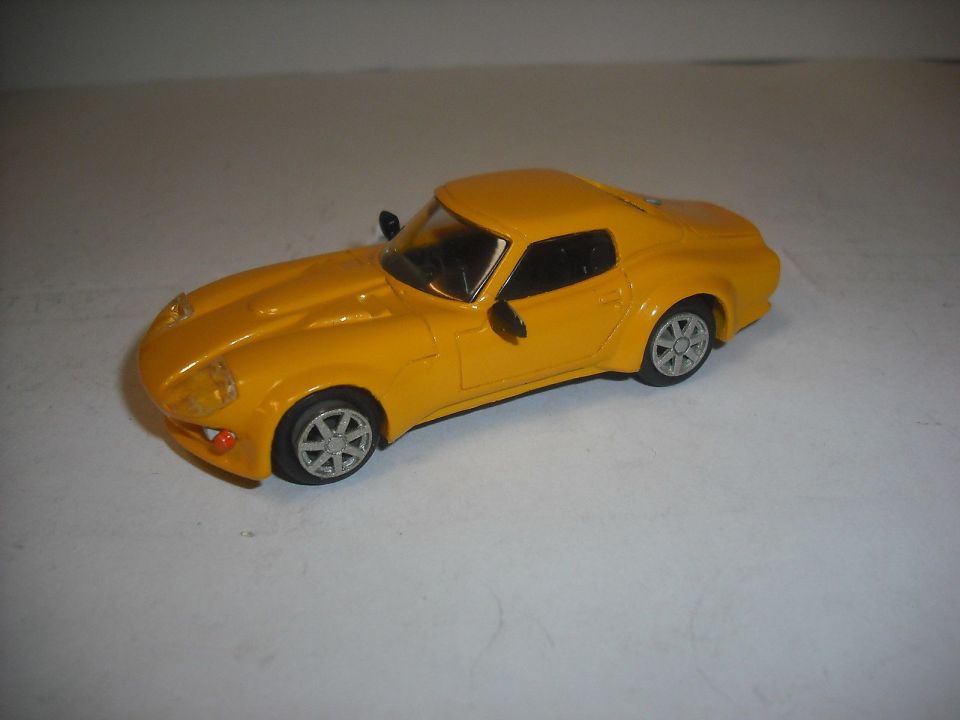
PROMOD Marcos MANTARA
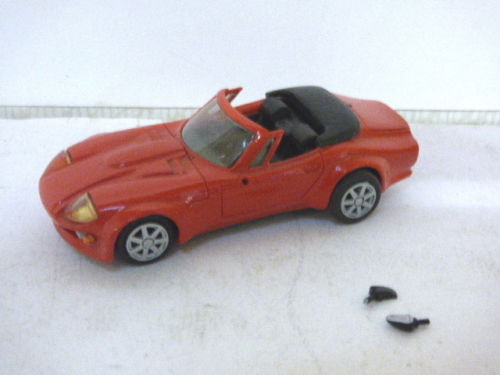
PROMOD Marcos MANTARA CONVERTIBLE
